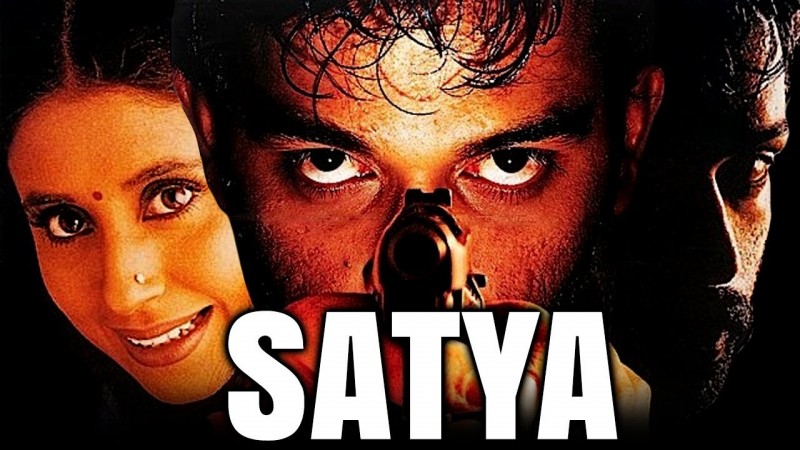
In the history of Indian cinema, "Satya" is recognized as a seminal work that redefined the crime genre while showcasing Mumbai's seedy underbelly. The Ram Gopal Varma-directed movie, which was released in 1998 and had a budget of less than 2 crore, was a remarkable success, grossing more than 15 crore at the box office. This article will explore the creation, significance, and legacy of "Satya," a movie that not only revolutionized Indian crime drama but also marked a significant turning point in the development of Bollywood.
"Satya"'s journey got off to a modest start, which was indicative of the financial challenges its creators were facing. Ram Gopal Varma and his crew set out on a mission to make a masterpiece of cinema that would accurately depict the seedy and dangerous underbelly of Mumbai with the meager 2 crore they had at their disposal. They chose to tell stories in a raw, realistic way rather than with the glitz and glamour typically associated with Bollywood.
"Satya"'s dedication to authenticity is among its most impressive features. Varma, who was renowned for his avant-garde filmmaking, made the decision to shoot the movie in actual locations all over Mumbai, including the notorious Dharavi slum. By making this choice, the filmmakers gave the movie an unmatched level of realism that engulfed the audience in the dingy, disorderly world of crime and corruption.
The ensemble cast, which was mostly made up of actors who were less well-known, gave strong and convincing performances. A vulnerable young man drawn into the Mumbai underworld, Satya was portrayed by newcomer J.D. Chakravarthy in the title role. As they witnessed his character's development from innocence to hardened criminal, the audience connected with his portrayal.
Manoj Bajpayee played the iconic Indian film character Bhiku Mhatre in "Satya," which also had a strong supporting cast. Widespread praise and recognition for Bajpayee's deft portrayal of the tense gangster resulted from his skillful performance, which made him a force in the field.
Urmila Matondkar's performance as Vidya, who provided a glimpse of innocence amidst the chaos, was also featured in the movie. She gave depth to the story by highlighting a woman caught in the middle of violence and love.
The music for the movie, which was written by Vishal Bhardwaj, was the ideal complement to the gritty, ominous tone of "Satya." The soundtrack, which included songs like "Goli Maar" and "Sapne Mein," added a poignant dimension to the narrative. In addition to becoming incredibly well-known, the music made a significant contribution to the movie's success.
"Satya" debuted to rave reviews from critics who praised its honest and unvarnished depiction of the Mumbai underworld. Bollywood was praised for the film's tight screenplay, compelling storytelling, and outstanding performances.
Despite its modest beginnings, "Satya" struck a chord with viewers all over India. Given its limited financial resources, the movie's box office earnings of over 15 crore were driven by word-of-mouth and positive reviews. The movie's success demonstrated that a gripping story, standout performances, and an authentic location could get around financial constraints.
On Indian cinema, "Satya" has had an immeasurable impact. In addition to opening the door for a new wave of realistic storytelling, it also encouraged a new generation of filmmakers to experiment with nontraditional storylines. Ram Gopal Varma revolutionized Bollywood with his inventive use of settings and his willingness to take chances with his storytelling.
Characters from the movie, particularly Bhiku Mhatre, have become recognizable figures in Indian popular culture. Bhiku, played by Manoj Bajpayee, continues to be one of Hindi cinema's most lauded performances. The expression "Mumbai ka king kaun? "Who's the king of Mumbai? Bhiku Mhatre!" Fans still recite "Bhiku Mhatre!" in this sentence.
Anurag Kashyap, a writer who later rose to fame as a filmmaker, and Ram Gopal Varma began working together successfully with "Satya" as well. The characters and dialogue in the movie gained depth and authenticity as a result of Kashyap's involvement in the screenplay and dialogue writing.
"Satya" is a cinematic gem that surpasses the limits of its modest budget and is still praised for its grim realism, potent acting, and compelling narrative. It proves that great movies can be made on modest budgets by people who are committed to telling real stories and pushing the boundaries of creativity. In spite of being released more than 20 years ago, "Satya" continues to stand out as a shining example of how a modest film can have a profound impact on Indian cinema, changing it for the better and inspiring subsequent generations of filmmakers.
Anurag Kashyap and Saurabh Shukla, The Architectural Geniuses Behind 'Satya'
Yash Chopra's 'Lamhe' Release Story
Hera Pheri Controversy: Suneil Shetty's Edited Scenes and Akshay Kumar's Defense